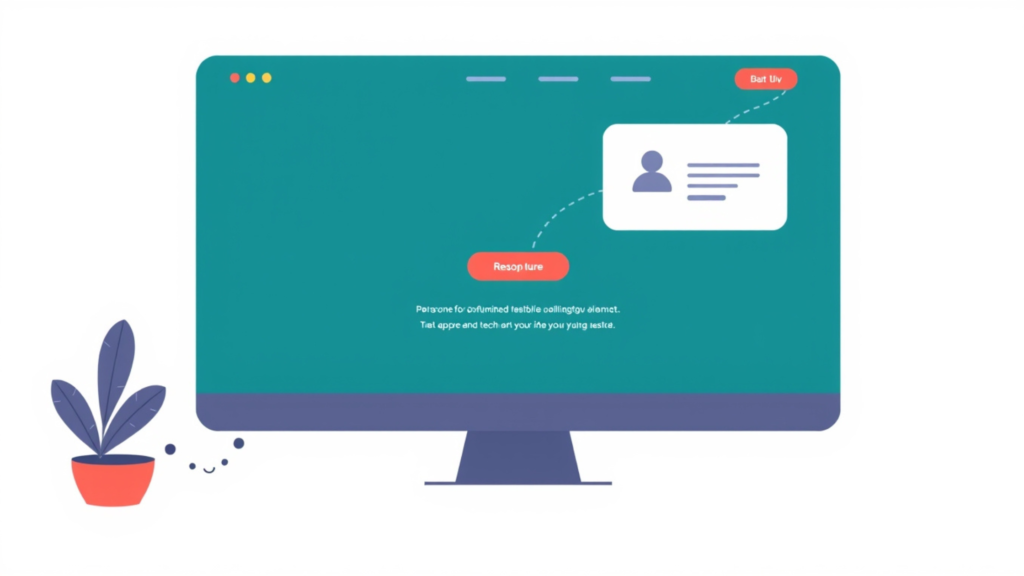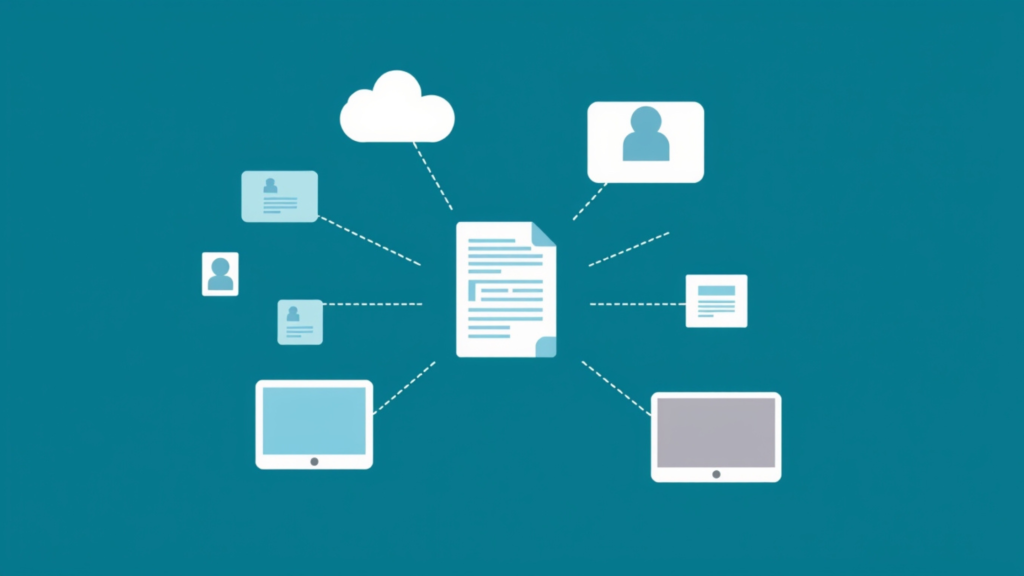15 Proven Strategies to Find and Generate B2B Leads in 2025

Welcome to the transformative world of B2B lead generation as we advance into 2025. The way businesses discover, engage, and convert potential leads has evolved significantly with the rapid adoption of advanced technologies and data-driven strategies.
Excelling in B2B lead generation is now vital for maintaining a competitive advantage. This guide delves into 15 innovative strategies designed to boost your lead generation efforts and position your business as a leader in a competitive market and this guide helps to master how to generate b2b leads.
1. AI-Powered Lead Scoring and Qualification

What is AI-Powered Lead Scoring?
AI-powered lead scoring utilizes sophisticated machine learning algorithms to evaluate and rank prospects according to the potential value they bring to the organization. This process automates and optimizes the prioritization of leads, allowing sales teams to focus their efforts on those most likely to convert, enhancing overall sales operations.
Benefits for Your Business
- Increased Efficiency: Focus on high-potential leads to maximize sales team efforts where they are most likely to have a substantial impact.
- Enhanced Accuracy: Deploy AI to process and analyze complex data sets, improving the accuracy of lead scoring, which is crucial for effective B2B lead generation.
2. Utilizing Intent Data for Precision Marketing

Understanding Intent Data
Intent data captures and analyzes a prospective buyer’s online activities, providing valuable insights about their interest in products or services similar to yours. This data is pivotal for targeting your marketing efforts more effectively, enabling you to engage leads precisely when they are most receptive.
How to Leverage Intent Data
- Targeted Campaigns: Develop personalized marketing messages that align with the specific interests and behaviors of potential leads.
- Improved ROI: Concentrate on leads who are already investigating similar solutions, thereby increasing your marketing spend’s efficiency.
3. Strategic Account-Based Marketing (ABM)

Tailoring Campaigns
ABM is a strategic approach where marketing and sales teams work in unison to tailor buying experiences for specifically targeted accounts. This method ensures the delivery of highly personalized communications across various channels, enhancing engagement and conversion rates.
Integration with CRM
- Seamless Coordination: Guarantee alignment across all team members with the strategy for each account, which is essential for successful B2B lead generation.
- Track Engagement: Continually refine your strategies by monitoring interactions and behaviors of targeted accounts to optimize outreach and engagement.
4. Voice Search Optimization and Conversational AI

Adapting to Voice Search
As voice-activated devices become more prevalent, optimizing your content for voice search is increasingly crucial. This entails understanding and integrating natural language processing into your content to effectively answer potential queries from leads.
Benefits of Conversational AI
- 24/7 Availability: Chatbots and AI assistants are ready to handle inquiries at any moment, significantly improving customer service.
- Immediate Response: These tools provide instant interactions, boosting user experience and speeding up the lead conversion process.
5. Predictive Analytics in Lead Generation

What Are Predictive Analytics?
Predictive analytics employs historical data along with machine learning to forecast likely future behaviors. In the context of B2B lead generation, it identifies patterns that suggest a lead’s readiness to make a purchase.
How to Apply Predictive Analytics
- Analyze Customer Data: Use data from CRM systems, email interactions, and sales engagements to identify and act on emerging trends.
- Anticipate Needs: Predict the needs of leads based on their profiles and engage them proactively with solutions that meet those needs.
6. Interactive and Immersive Content Experiences

The Appeal of Interactive Content
To captivate and maintain the attention of your audience, move beyond traditional content forms by integrating interactive elements such as quizzes, polls, and immersive webinars. This not only engages users more deeply but also strengthens their connection to your brand.
Examples of Immersive Content
- Virtual Product Demos: Enable leads to virtually interact with your products through immersive VR experiences.
- Interactive Calculators: Provide tools that allow users to calculate potential costs or ROI, adding real-time value during their decision-making process.
- Gamification: Incorporate game-like elements to create engaging and competitive content, making interactions with your brand enjoyable and memorable.
7. Advanced Social Selling Techniques

Why Social Selling Matters
In today’s digital age, social media platforms are invaluable for forging connections with decision-makers. Advanced social selling transcends basic networking; it involves cultivating meaningful relationships that can lead to business opportunities.
How to Excel in Social Selling
- Thought Leadership: Position yourself as an industry expert by consistently sharing insightful content and participating in relevant discussions.
- Active Listening: Employ social listening tools to monitor and engage in conversations related to your industry, identifying pain points that your products or services can address.
- Meaningful Interactions: Prioritize genuine, trust-building interactions over aggressive selling tactics to foster lasting relationships with potential clients.
8. Influencer Partnerships in B2B Markets

Why Influencers Matter in B2B
In the B2B sector, influencers are often regarded as thought leaders or industry authorities whose endorsements can significantly enhance your brand’s credibility and extend your reach within the market.
Steps to Build Effective Partnerships
- Identify Relevant Influencers: Use platforms like BuzzSumo or LinkedIn to discover influencers who are respected within your target niche.
- Collaborate on Content: Partner with influencers to co-create content such as webinars, podcasts, or whitepapers that showcase your collective industry expertise.
- Track Results: Evaluate the effectiveness of influencer partnerships by monitoring metrics related to lead quality, reach, and overall engagement.
9. Dynamic Website Personalization

What is Website Personalization?
Dynamic website personalization adapts the browsing experience based on individual visitor behavior, industry, or prior interactions with your site. This tailored approach makes content more relevant and engaging for each visitor, significantly enhancing their experience and increasing the likelihood of conversion. Hiring a website design agency can further optimize this process for even better results.
How to Implement Personalization
- Segment Your Audience: Effectively categorize visitors to deliver customized experiences that resonate with their specific interests and needs.
- Tailored Content: Dynamically modify content presentation based on visitor data to ensure relevancy at every touchpoint.
- Personalized Offers: Develop offers that are specifically tailored to the needs and preferences of each visitor, enhancing engagement and encouraging conversions.
10. Precision Targeting with Programmatic Advertising

What Is Programmatic Advertising?
Programmatic advertising leverages advanced AI technology to automate the buying and placement of ads, ensuring that your marketing messages reach the right audience at the optimal time. This method maximizes ad spend efficiency and enhances targeting precision.
Key Benefits
- Real-Time Adjustments: Continuously optimize your advertising campaigns based on real-time performance data.
- Granular Targeting: Specify ad delivery to incredibly detailed demographic and psychographic segments to ensure your messages reach the intended audience.
- Increased Efficiency: Minimize the time and resources spent on manual ad adjustments, allowing you to focus more on strategic decision-making and campaign optimization.
11. Content Syndication Strategies

Expanding Reach Through Syndication
Content syndication broadens the exposure of your content by distributing it across third-party platforms. This strategy not only extends your reach but also enhances your brand’s thought leadership and drives significant traffic and backlinks to your site.
Steps to Syndicate Content
- Partner with Niche Platforms: Form alliances with industry-specific websites and blogs that attract your target audience, ensuring your content reaches those most likely to engage with it.
- Adapt Your Content: Customize your content to align with the style and expectations of each syndication platform, maximizing its impact and relevance to new audiences.
- Measure Performance: Employ advanced analytics tools to track the effectiveness of your syndication efforts, focusing on metrics such as referral traffic, lead quality, and audience engagement.
12. Advanced Lead Nurturing Workflows

Designing Multi-Touch Campaigns
Effective lead nurturing requires a sophisticated, multi-touch approach that guides potential customers through each stage of the buyer’s journey. This involves using a combination of personalized emails, precisely targeted social media ads, and engaging direct communication tools like webinars.
Examples of Nurturing Tactics
- Drip Campaigns: Design email sequences that gradually provide increasingly relevant and educational content, fostering trust and keeping your brand top of mind.
- Retargeting Ads: Implement targeted ads that reconnect with users who have visited your site but did not convert, keeping your brand visible and engaging.
- Event Invitations: Extend personal invitations to webinars or exclusive events, using these as strategic touchpoints to deepen relationships and enhance engagement with potential leads.
13. Blockchain for Transparent Lead Generation

How Blockchain Enhances Trust
Blockchain technology introduces a new level of trust and transparency to B2B transactions. By securing data integrity and privacy, blockchain significantly elevates the trustworthiness of your lead generation processes.
Use Cases for Blockchain
- Data Verification: Implement blockchain solutions to ensure the accuracy and reliability of lead data, crucial for maintaining the effectiveness of your marketing efforts.
- Privacy Compliance: Enhance your compliance with stringent data privacy regulations such as GDPR by utilizing blockchain’s transparent and secure data handling capabilities.
- Enhanced Security: Provide unparalleled data security, protecting sensitive lead information from unauthorized access and breaches, thus preserving the integrity of your customer relationships.
14. Predictive Lead Scoring Models

How Predictive Models Improve Accuracy
Predictive lead scoring refines the assessment of potential leads through continuous learning and adaptation, using a wide array of data points from user behavior on your website to engagement with marketing materials.
Benefits of Predictive Scoring
- Increased Conversion Rates: Focus your efforts on leads with the highest conversion potential, significantly boosting your ROI.
- Better Resource Allocation: Allocate your marketing and sales resources more efficiently by focusing on leads that are most likely to yield results.
- Improved Forecasting: Enhance your ability to forecast sales outcomes with greater accuracy, allowing for more strategic planning and resource allocation.
15. Cross-Channel Attribution Modeling

Understanding Cross-Channel Behavior
Cross-channel attribution modeling is essential for decoding the complex interactions a customer has with your brand across multiple platforms before making a purchase. Understanding these interactions helps you optimize your marketing strategies and allocate your budget more effectively.
Tools and Techniques
- AI-Powered Analytics: Utilize cutting-edge tools like Google Attribution or Adobe Analytics to trace and attribute customer interactions to the most impactful marketing touchpoints.
- Actionable Insights: Use the detailed insights provided by attribution models to reallocate your marketing resources more effectively, ensuring that the channels that drive the most customer engagement and conversions receive the appropriate investment.
Partner with the Best B2B Lead Generation Company
Choosing to work with a top-notch B2B lead generation company can significantly elevate your sales strategy. Here’s why partnering with a company like Saletancy might be a game-changer for your business:
- Tailored Solutions: Saletancy offers customized strategies that align perfectly with your unique business needs, ensuring that you receive the most relevant services.
- Expertise and Experience: Their team has deep expertise and a proven track record in B2B lead generation across various industries.
- Comprehensive Services: From identifying potential leads to nurturing them until they’re ready to make a purchase, they handle it all. This means you can focus more on closing deals and less on finding leads.
- Data-Driven Approach: Utilizing the latest tools and technologies, Saletancy bases its strategies on solid data, which can improve the effectiveness of your campaigns.
- Transparent Communication: They keep you in the loop with regular updates and reports, so you always know how your campaigns are performing.

Partnering with an experienced company like Saletancy can help you streamline your lead generation efforts and achieve better results faster.
Conclusion
As we navigate the evolving landscape of 2025, it’s clear that B2B lead generation has become a more sophisticated, data-driven endeavor. By integrating these 15 advanced strategies, your business can not only keep pace but also excel in the competitive digital marketplace.
Effective lead generation is about much more than just accumulating leads—it’s about cultivating quality engagements that convert into lasting business relationships. With these innovative tools and techniques, you can ensure your sales pipeline is robust, targeted, and efficient, driving substantial growth and fostering enduring customer connections.
FAQs: 15 Proven Strategies to Find and Generate B2B Leads in 2025
How can I generate B2B leads?
Generating B2B leads involves identifying potential customers for your products or services. Start by understanding your target market and using strategies such as content marketing, LinkedIn networking, email campaigns, and attending industry conferences to connect with potential clients.
How do I find B2B sales leads?
Finding B2B sales leads can be done by leveraging online and offline methods. Online, you can use SEO, PPC advertising, and social media platforms, especially LinkedIn. Offline, consider networking at trade shows and industry events or using referrals from existing customers.
What is the best source of B2B leads?
The best source of B2B leads often depends on your specific industry, but generally, a combination of digital marketing (like SEO and social media) and traditional networking (such as industry conferences and referrals) tends to be most effective.
How to qualify B2B leads?
To qualify B2B leads, assess how well they fit your ideal customer profile. Look at factors such as their industry, company size, and specific needs. Engage with them to determine their interest level and purchasing power. This helps prioritize leads that are more likely to convert.
Where can I get B2C leads?
B2C leads can be generated through various online platforms such as social media (Facebook, Instagram), email marketing, and PPC campaigns. Offline methods include promotional events and local advertising. Tailor your message to appeal directly to the consumer’s interests and needs.
How do I start a B2B startup?
Starting a B2B startup involves identifying a niche market, developing a business plan, securing funding, and building a product or service that meets the needs of that market. Focus on building strong business relationships and a solid sales strategy.
How do I find startup leads?
Startup leads can be found by networking at startup events, joining relevant online forums, and using platforms like LinkedIn to connect with potential investors and customers. Consider also using content marketing to attract leads by sharing your startup’s story and value proposition.
How to generate B2B leads using ChatGPT?
Generate B2B leads using ChatGPT by creating engaging, interactive content that answers potential clients’ questions or solves their problems. You can integrate ChatGPT on your website as a chatbot to interact with visitors, and qualifying leads by collecting their contact information.
What is a B2B lead list?
A B2B lead list is a collection of potential business contacts that you can target with your marketing campaigns. These lists typically include company names, contact information, industry details, and other relevant data to help you reach out to potential customers.
How do you get B2B leads?
Get B2B leads by employing strategies like content marketing, SEO, participating in B2B directories, cold emailing, and LinkedIn networking. Also, consider purchasing lead lists from reputable providers or using lead generation software.
How do I find clients in B2B?
Finding clients in B2B can be achieved by identifying the decision-makers in companies that could benefit from your services. Use LinkedIn to research and connect with these individuals, and employ targeted marketing strategies like email campaigns and industry-specific advertising to reach them.